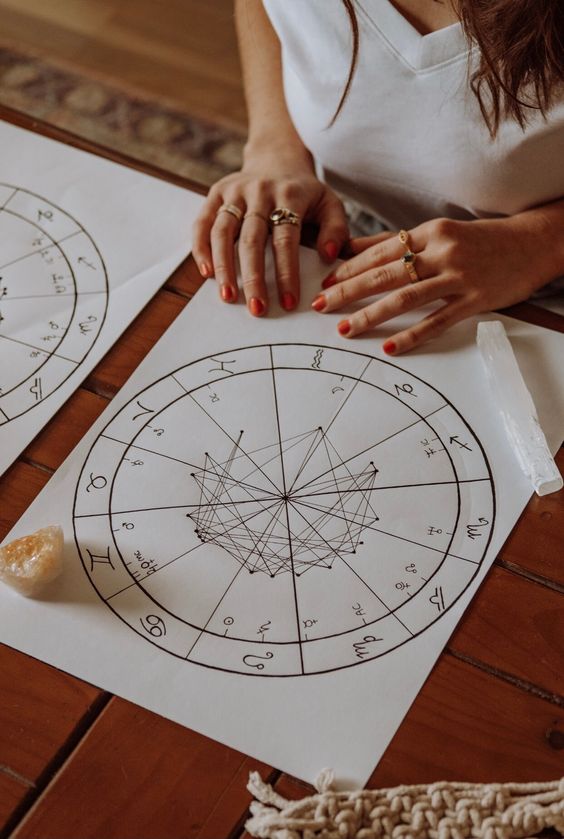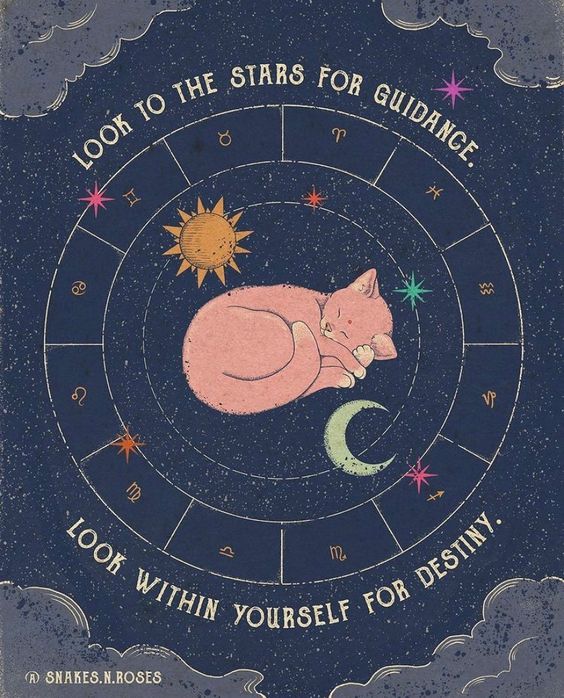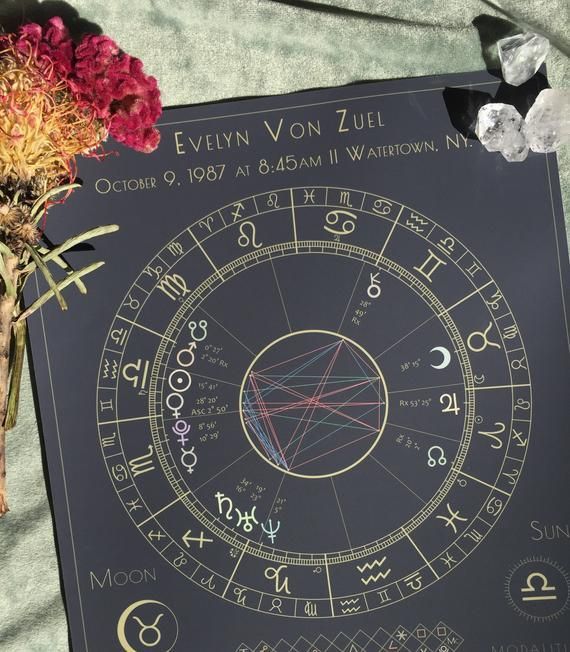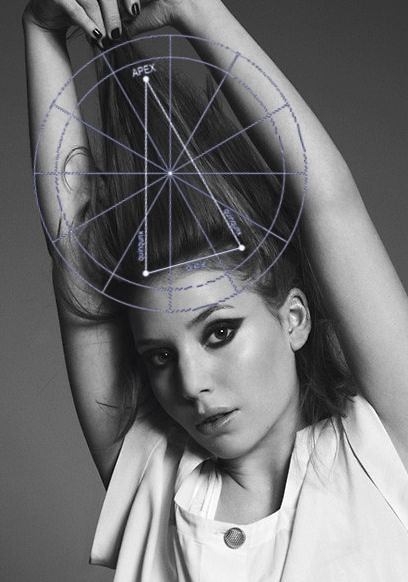
Astrology Forecasting
 The principle of synchronicity, an idea popularized by Swiss psychiatrist Carl Jung, suggests that events are “meaningful coincidences” if they occur with no causal relationship yet seem to be meaningfully related. In astrology, this manifests as the belief that the alignment of the planets at the time of birth influences an individual’s personality and fate. A natal horoscope is more than just a static image; it is seen as a dynamic blueprint of potential. Each element within the chart—from the zodiac signs, the houses, to the angles the planets make with one another—describes different facets of the individual’s personality and potential life path. The belief is that we are each born into a specific moment within a larger universal cycle. In astrology, the planetary movements (transits) symbolically mirror human growth and development. Astrologers argue that by understanding the patterns in these charts, individuals can align themselves more closely with their innate potentials and, perhaps, fulfill their soul’s purpose.
The principle of synchronicity, an idea popularized by Swiss psychiatrist Carl Jung, suggests that events are “meaningful coincidences” if they occur with no causal relationship yet seem to be meaningfully related. In astrology, this manifests as the belief that the alignment of the planets at the time of birth influences an individual’s personality and fate. A natal horoscope is more than just a static image; it is seen as a dynamic blueprint of potential. Each element within the chart—from the zodiac signs, the houses, to the angles the planets make with one another—describes different facets of the individual’s personality and potential life path. The belief is that we are each born into a specific moment within a larger universal cycle. In astrology, the planetary movements (transits) symbolically mirror human growth and development. Astrologers argue that by understanding the patterns in these charts, individuals can align themselves more closely with their innate potentials and, perhaps, fulfill their soul’s purpose.
This astrological blueprint can be seen as a reflection of your soul’s purpose, a mirror held up to the innermost recesses of your character. The planets, in their perpetual motion, sketch out the story of your life experiences and lessons meant to guide you on your path of growth and self-discovery. Think of it like a cosmic spiral, each turn bringing us back to familiar themes, but with the potential for greater understanding and depth. The universe, in its orderly elegance, moves us ever forward, encouraging our development, reflecting our inner states through the movement of the planets. Astrology’s beauty lies in its ability to reveal the interconnectedness of all things, reminding us that we are not isolated fragments but integral parts of a grand, orderly cosmos. So, the next time you gaze up at the night sky, remember: you are a part of this magnificent expression of the universe’s infinite creativity.
What Are Transits?
The nativity chart—essentially a map of where the planets were at the moment of one’s birth—acts as a personal cosmic fingerprint. It defines the planetary influences that are thought to impact an individual throughout their life. As planets continue their orbits, they form transits, which are relationships between the current positions of planets and their positions at the time of one’s birth. These transits are considered to have a significant influence on personal development, marking periods of major life changes, challenges, and opportunities.
The influence of planetary movements on personal growth can be segmented into two main categories: major transits and minor transits. Major transits involve outer planets like Jupiter, Saturn, Uranus, Neptune, and Pluto. These planets move slowly and their effects are seen as more profound and lasting, often corresponding with significant life events and long-term personal transformation. Conversely, the minor transits involve the faster-moving celestial bodies—the Sun, Moon, Mercury, Venus, and Mars. These transits occur more frequently and are often associated with day-to-day experiences and shorter-term influences on mood, behavior, and interactions.
Just as planets return to their positions or form significant aspects with their original places, so too do certain themes or lessons reappear in our lives, inviting us to revisit and relearn from them. Understanding these cycles can provide individuals with insights into the timing of their personal developments and challenges, offering a framework through which to view their experiences through life.
Jupiter’s almost 12-year journey expands our horizons, while Saturn’s 29.46-year cycle imposes long-term lessons and responsibilities. Uranus, with its 84-year cycle, shakes things up, bringing innovation and unexpected change. Neptune, in its 165-year voyage, influences dreams and illusions, guiding our spiritual journey. And Pluto, the slow transformer, takes a staggering 248 years to complete its orbit, delving deep into the undercurrents of our psyche, unearthing profound truths and metamorphoses. The minor planets—Sun, Moon, Mercury, Venus, and Mars—dance with lively, rapid steps, constantly engaging with our natal planets. They’re the dynamic elements, the ones that keep our daily lives ever-changing. The Moon, with its 28-day cycle, is like a swift, emotional pulse, a monthly reminder of our inner tides. Mercury, darting around the Sun every 88 days, mirrors our mental agility and communication. Venus, in its 225-day orbit, reflects our desires and relationships, while Mars, with its 687-day journey, fuels our drive and ambition.
In predictive work, Dane Rudhyar focuses on the astrological cycles of Saturn and Uranus, believing that they serve as markers of significant periods and transitions in a person’s life. Saturn takes about 29 years to complete one orbit around the Sun. This cycle in astrology is often marked by significant life events and challenges. The completion of one Saturn cycle, a phenomenon known as the “Saturn Return,” typically occurs around the ages of 29, 58, and 87. It is associated with maturity and coming into one’s own, where the lessons of the first part of the cycle are integrated and crystallized. This period often demands a restructuring of personal goals and responsibilities, emphasizing growth through challenges.
Uranus, on the other hand, takes about 84 years to complete its orbit, roughly aligning with the average human lifespan. The passage of Uranus is associated with innovation, rebellion, and significant shifts in consciousness. Its influence brings about sudden changes that can disrupt one’s life, pushing individuals towards greater authenticity and freedom. The Uranian cycle highlights times when individuals are likely to experience breakdowns, breakthroughs or breakaways, urging them to redefine their path in life.
Rudhyar views these cycles as indicators of timing and life phases. By tracking these “hands of an astrological clock,” one can pinpoint periods of potential crisis, transformation, and maturation. He acknowledges that personal milestones like marriage or career changes can shift how these planetary influences manifest. For instance, someone who marries young might experience certain developmental milestones earlier than others, which astrologically could mean that their Saturn or Uranus transits express differently or are felt in other areas of their life.
An essential part of Rudhyar’s philosophy is the balance between change and constancy. While he champions the idea of transformation—suggesting that we are meant to evolve and change our expressions and perhaps our consciousness—he also believes in the importance of remaining true to one’s core essence. Deviations from typical life patterns—like early marriage or delayed adolescence—are eventually counterbalanced. The author suggests that life seeks equilibrium. If an experience is accelerated or delayed, other life events or internal changes will arise to restore balance, aligning once more with the natural and cosmic rhythms that underlie our existence.
Saturn, with its 29-year cycle, acts as the clockmaker, ensuring that we face our lessons with patience and perseverance. It completes three full rotations in an average human lifespan, each turn marking significant epochs: the first Saturn return around age 29, a time of maturation and responsibility; the second return around age 58, a period of reflection and reassessment; and the third, if we’re fortunate, around age 87, a time of wisdom and legacy. Then we have Uranus, the revolutionary planet, completing its 84-year orbit, aligning with a full human life cycle. Uranus’ energy is one of change and upheaval, challenging us to break free from the constraints of convention and express our unique individuality. Its transits bring sudden insights, shifts in consciousness, and the opportunity for personal transformation. Each Saturn return demands we confront our limitations, build structure, and lay solid foundations. Each Uranus transit shakes us from complacency, urging us to awaken to new possibilities and redefine our path. Consider the natural rhythms of life, the crises and triumphs that often align with these astrological markers. The Saturn return, for instance, often coincides with significant life decisions—career changes, marriages, taking on more responsibility. It’s a period of reckoning, where we must face the reality of our choices and the responsibilities they entail. Uranus transits, on the other hand, bring periods of radical change—sudden moves, breakthroughs, or even crises that force us to reevaluate our lives. Rudyhar’s insight into compensatory mechanisms in our lives is equally fascinating. For those who marry early, delaying the full experience of adolescence, there is often a balancing act later in life. The deviations from our natural rhythms must find equilibrium, often manifesting as delayed pursuits of freedom or self-discovery. It’s the universe’s way of ensuring we experience the full spectrum of growth, no matter the path we take.
Understanding Time and Fate in Astrology
While we cannot control these cycles, understanding them can provide insights into the nature of the changes and challenges that might lie ahead. Astrologers use the birth chart to predict periods of ease or difficulty based on these transits.
Nothing remains static. Even as we cast a birth chart, the universe has already shifted. Fate and time, in their enigmatic partnership, move according to their rhythms, urging us forward, helping us to grow and evolve. With the gift of astrology, we can predict certain planetary triggers, times that signal periods of ease, growth, or challenge. It’s like having a weather forecast for the soul, providing a general idea of the upcoming astrological climate. Will it be a sunny phase of harmony and expansion, or a stormy period of trials and transformation? Yet, they stop short of revealing the exact nature of our experiences. The specifics of our experiences are shaped by our actions, choices, and the myriad variables of our personal lives. We can see the upcoming challenges of Saturn’s stern lessons or the unexpected disruptions of Uranus’s radical shifts, but how we respond, adapt, and integrate these experiences is up to us. In this way, astrology empowers us. It provides a lens through which we can anticipate and prepare, allowing us to approach life’s ebb and flow with a sense of curiosity and readiness. We become co-creators of our destiny, dancing with the planets rather than being dragged along by them.
Fate vs Free Will
Modern astrologers rely heavily on tools like the ephemeris, a table that lists the locations of heavenly bodies at regular intervals, to understand and predict planetary movements. This tool allows astrologers to see past, present, and future planetary positions, facilitating insights into how these positions might influence an individual’s life chart. The universality of planetary movements means that while everyone is under the same planetary influences, they manifest uniquely for each individual. Even if one does not consciously follow or “believe” in astrology, astrologers argue that the planetary influences are at work nonetheless, affecting our lives in unseen ways.
The manifestation of these transits can vary significantly among individuals. One person might experience a transit of Mars as a time of increased conflict or assertiveness, while another might channel the same energy into a productive and ambitious project. The timing and clarity of these influences can also vary; some transits might bring immediate changes, while others unfold their full impact over longer periods, requiring reflection and sometimes retrospective understanding to fully grasp their influence on one’s life path.
External vs. Internal Manifestations
The effects of planetary transits can manifest externally—such as through events or interactions with others—or internally, affecting a person’s emotions or thoughts. The nature of these effects often depends on the individual’s natal chart and current life circumstances. Some may experience internal changes without any outward signs, while others may see conspicuous changes in their external circumstances without yet feeling a corresponding internal shift.
The planets continue their inexorable journey, casting their influences upon us, regardless of our awareness or belief in astrology. The unfolding chart, predetermined at birth, lays out the conditions we will encounter, but it’s our reactions, our choices, and our inner growth that truly color our experiences. How we engage with these transits defines the quality and depth of our journey. It’s fate and free will. When a transiting planet makes contact with our birth chart, it highlights specific themes and issues, urging us to pay attention, to learn, and to evolve. For some, the effects are there immediately and physically, like a lightning bolt of realization or an unexpected event. For others, the impact is more subtle, unfolding internally over time. Consider Saturn’s disciplined touch, often bringing lessons of responsibility, structure, and endurance. When Saturn transits a significant point in your chart, you may face challenges that test your resilience and commitment. How you respond—whether you buckle under the pressure or rise to the occasion—shapes the outcome. It’s a call to maturity, urging you to build something lasting and meaningful. Contrast this with Uranus, the planet of sudden change and innovation. When Uranus makes its presence known, it often disrupts your life, pushing you out of your comfort zone and into uncharted territory. These transits, though universal in their occurrence, are deeply personal in their impact. Each soul experiences the planetary movements in a way that is unique to their own chart and life circumstances. The same Saturn transit that brings one person a demanding new job might lead another to a period of intense personal reflection. The same Uranus transit that sparks one person’s sudden move across the country might ignite another’s radical shift in perspective.
In astrology, the level of an individual’s consciousness can profoundly affect how they experience and react to planetary transits. A higher level of awareness might enable someone to use a challenging transit as a catalyst for growth, whereas a less aware individual might resist the changes, leading to more difficult circumstances. According to Jeff Green, avoiding or blocking the experiences indicated by transits doesn’t negate their impact; instead, it might delay the inevitable, causing the energy to build up in the psyche and potentially intensify the experience when it finally manifests.
Projection and Externalization of Transits
Another fascinating aspect of how transits can affect individuals is the potential for projection. People might unconsciously project the energies of their transits onto others, experiencing through relationships or interactions what they are unable to acknowledge or handle internally. For instance, the tension of a Pluto transit might not directly cause personal transformation but could instead materialize through intense encounters with others, reflecting back one’s own need for change. For those who regularly consult their astrological charts, life can sometimes feel pre-scripted, as if the transits have laid out a path that one is destined to follow.
Evolution and Opportunities for Growth
Forecasting in astrology isn’t a rigid science but rather an art, a combination of cosmic patterns and the ever-shifting realm of human consciousness. Much depends on the individual’s awareness, their openness to growth, and their readiness to for the lessons the stars offer. When we resist the flow, the universe has a way of intensifying the energy, ensuring we cannot ignore it forever. This stored energy, lingering in the psyche, bides its time, waiting for the next planetary trigger to bring it to the forefront once more. We might project these energies onto the people around us, experiencing the transit’s influence through our relationships and encounters. The universe uses the people in our lives as mirrors, reflecting the lessons we need to learn. As we look at the past, present, and future through the lens of our transit charts, we see the interconnectedness of our experiences. The past transits show us the lessons we’ve faced, the growth we’ve achieved, and the patterns that continue to influence us. The present transits highlight the current themes and challenges, urging us to stay mindful and engaged. And the future transits offer a glimpse of what’s to come, not as a fixed fate but as a series of potentialities, pathways waiting to be explored. Every planetary influence is an invitation to deepen our understanding, to expand our consciousness, and to align more closely with our true selves. Try to recognize that while the stars may chart a course, it is your choices, your consciousness, and your willingness to grow that truly define your journey.



















 Venus Trine Pluto: Dark Desires
Venus Trine Pluto: Dark Desires
 Mars Conjunct Pluto Synastry
Mars Conjunct Pluto Synastry
 Sun Square Pluto Synastry: You’ve Got That Power Over Me
Sun Square Pluto Synastry: You’ve Got That Power Over Me
 Saturn in the 1st House: From Self-Doubt to Lasting Identity
Saturn in the 1st House: From Self-Doubt to Lasting Identity
 Venus Trine Mars Synastry
Venus Trine Mars Synastry
 The Scorpio Teenager
The Scorpio Teenager
 Reflections on a Past Venus-Pluto Synastry Aspect
Reflections on a Past Venus-Pluto Synastry Aspect
 Moon Conjunct Mars Natal Aspect
Moon Conjunct Mars Natal Aspect
 Mars-Pluto Synastry: Something Quite Dark and Dangerous
Mars-Pluto Synastry: Something Quite Dark and Dangerous
 Venus-Pluto Synastry: A Love So Powerful That It Might Just Kill Them
Venus-Pluto Synastry: A Love So Powerful That It Might Just Kill Them
 The Yod Aspect Pattern: The Mystical Power of the “Finger of Fate”
The Yod Aspect Pattern: The Mystical Power of the “Finger of Fate”
 Emotional Understanding: Moon Trine Synastry Aspects Interpreted
Emotional Understanding: Moon Trine Synastry Aspects Interpreted
 The Moon: The Goddess of the Night
The Moon: The Goddess of the Night
 Mars in Aquarius: Sex drive
Mars in Aquarius: Sex drive
 Uranus Transits: 1st House: Winds of Change:
Uranus Transits: 1st House: Winds of Change:
 Sun Square Pluto Natal Aspect: I Am Titanium
Sun Square Pluto Natal Aspect: I Am Titanium
 Moon Conjunct Pluto Synastry
Moon Conjunct Pluto Synastry
 Venus Conjunct Neptune Synastry: Euphoria and the Aftermath
Venus Conjunct Neptune Synastry: Euphoria and the Aftermath
 Pluto in Libra in the 2nd House: Lessons on Self-Worth and Financial Independence
Pluto in Libra in the 2nd House: Lessons on Self-Worth and Financial Independence
 Sun Conjunct Pluto Synastry: Enlightening or Annihilating
Sun Conjunct Pluto Synastry: Enlightening or Annihilating